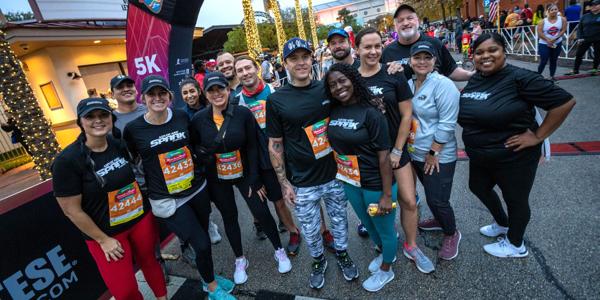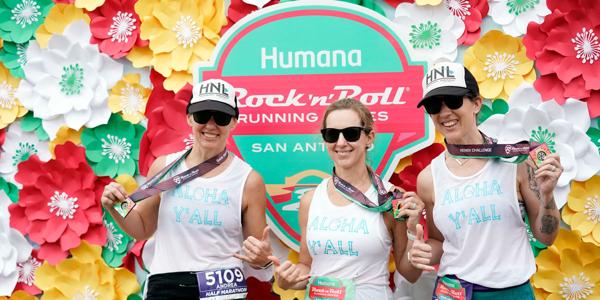Rock 'n' Roll Running Series
To be successful (and happy) in running, it is important to set realistic goals, take one day at a time and enjoy the process. Check out these tips to help you get your goals off to the right start.
Runners who train solely to achieve a specific goal tend to push harder and increase training volume without regard to the feedback their body is providing, resulting is inconsistent training and stagnant results. So, how should you approach your training and goal-setting?
Don’t focus on the end goal — instead, focus on the process.
But what does that phrase really mean? The idea of focusing on the process means concentrating on the steps you need to take to improve each day, as opposed to focusing on the end goal itself. While the difference between the two is subtle, it has important consequences. Let’s illustrate this in the following scenario of two runners, each of whom is about 35 minutes away from qualifying for the Boston Marathon.
At the start of the training phase, runner 1 assesses her fitness and determines she’s currently at a fitness level 35 minutes slower than her goal time. She sets up her training schedule so that her mileage, long runs and workouts are consistent with the volume and speed she’s been training at. After four weeks of hard yet controlled workouts, she does a tune-up 10K. She runs well, and her “estimated” marathon time is now 30 minutes closer to her goal.
Each week thereafter, she cautiously increases her training paces when her workouts and tune-up races indicate she’s ready to do so. She follows this plan, always keeping her training within her current fitness level. When race day approaches, she’s fit, healthy and runs a great race, recording a personal best by 20 minutes, but still shy of her Boston qualifying goal. She takes the proper recovery time after the race and then starts the cycle over again in another attempt to get closer to her goal of qualifying for Boston. This time, her starting fitness is higher than it was before and when race day approaches, she nails her goal time and achieves her Boston qualifying goal.
Our second athlete is more aggressive and decides she’s going to do whatever it takes to qualify for Boston. She starts her segment and begins to push her easy and long run paces to get closer to the times she’ll need to run in the marathon. On workout days, she pushes the envelope when she feels good and finishes each workout exhausted. The first few weeks of this plan go OK, and after a 10K tune-up race, she realizes she’s only 25 minutes from her goal time. So, she starts doing her long runs with the faster group in her running club, which goes well until her IT band starts giving her trouble.
After a few days of limping through runs she goes to a physical therapist and is told to take a week off from running. Reluctantly, she takes the needed rest. When she returns to training, she feels good but realizes she’s now a week behind in her training schedule and it’s crunch time if she’s going to hit her goal. So, she jumps right back into the hard workouts and long runs, and two weeks later, she starts to feel her Achilles tug. Once again, a visit to the therapist confirms she needs to take a week off from running. This process repeats itself until race day, when she valiantly attempts to run the race, but due to lack of consistent training, she runs 40 minutes slower than her goal time. Once she recovers from the race, she repeats the same goal-oriented cycle and unfortunately never runs much faster than her current personal best.
Do either of these cases sound familiar to you?
The second component of focusing on the process is related to training at your current fitness level, but is more focused on how you build your mileage, long runs and workout volumes.
This best example of this is when coming back from an injury. Many runners who have to take a week or two off to heal from an injury immediately return to hard training in an attempt to hit their goal time. They’ll take the risk of getting injured again if it means they can regain their fitness faster. The problem with this approach is that it often leads to further injury. Not only do these runners not hit their goal time, but now they’re injured again.
A better approach in this situation is to put your race goals on the back burner and focus on taking the next logical step in your training each week. Increase your volume only as much as your body is ready to handle and train to your current fitness level, not where you were or where you want to be on race day. Sure, this logical progression might not progress you fast enough to hit your goal on race day, but you’ll have months of consistent training behind you and, most importantly, you’ll be healthy and ready to keep training hard for the next race. And yes, there will always be other races.
Focus on the process, train consistently, stay healthy, and keep moving forward one day, week and month at a time.





